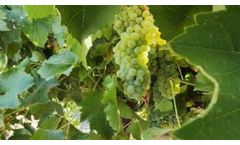Refine by
Harvesting System Articles & Analysis: This-Year
6 articles found
This analysis is crucial because seed lots often contain small amounts of other plant species, debris, or damaged seeds collected during harvesting and processing. The International Seed Testing Association (ISTA) and the Association of Official Seed Analysts (AOSA) provide detailed guidelines to ensure uniform testing procedures worldwide. ...
In California’s sun-soaked vineyards, where the wine and table grape industries are cornerstones of the state’s agricultural economy, powdery mildew remains a relentless adversary. Caused by the fungal pathogen Erysiphe necator, powdery mildew is one of the most pervasive and damaging diseases in viticulture, affecting both the yield and the market quality of grapes. Once ...
The pheromone molecules of several species of insects in the same genus, for instance, are nearly identical, or even exactly the same, just in different proportions. For instance, the four harvester ant species in the Pogonomyrmex genus all have three pyrazines used as a sign for where to find food, but proportions of the three components are different in the four ants; the ...
Grain carts are an effective way to reduce equipment wear and field compaction. Why waste expensive combine hours stopping to unload onto trucks at the end of the field? Or worse, exposing your operation to yield loss by compacting the ground with trucks in the field? Both these practices waste precious harvest time and put unnecessary wear on your equipment. Grain carts stay on the field, ...
During the 2023 growing season, Mr. Steven Deitz, a research consultant with Sawtooth Ag Research (Selma, CA) conducted a field study using a new ROS mineral oxychloride disinfectant, JC 9465, to control sour rot in mature (6 years old) wine grapes (cv. French Columbard) vineyard. The test site (vineyard) had a history of virus infections that showed symptomology late in the season when under ...
Treatment: Yield Check: 126.0 Bu AgZyme®: 135.5 Bu Summary: Yield Increase of 9.5 Bu/Acre with AgZyme® Application: AgZyme® was applied on half of a 37 acre field at 12.8 ounces per acre. The two sides of the field were harvested separately. All treatments were fertilized according to growers standard practice ...






